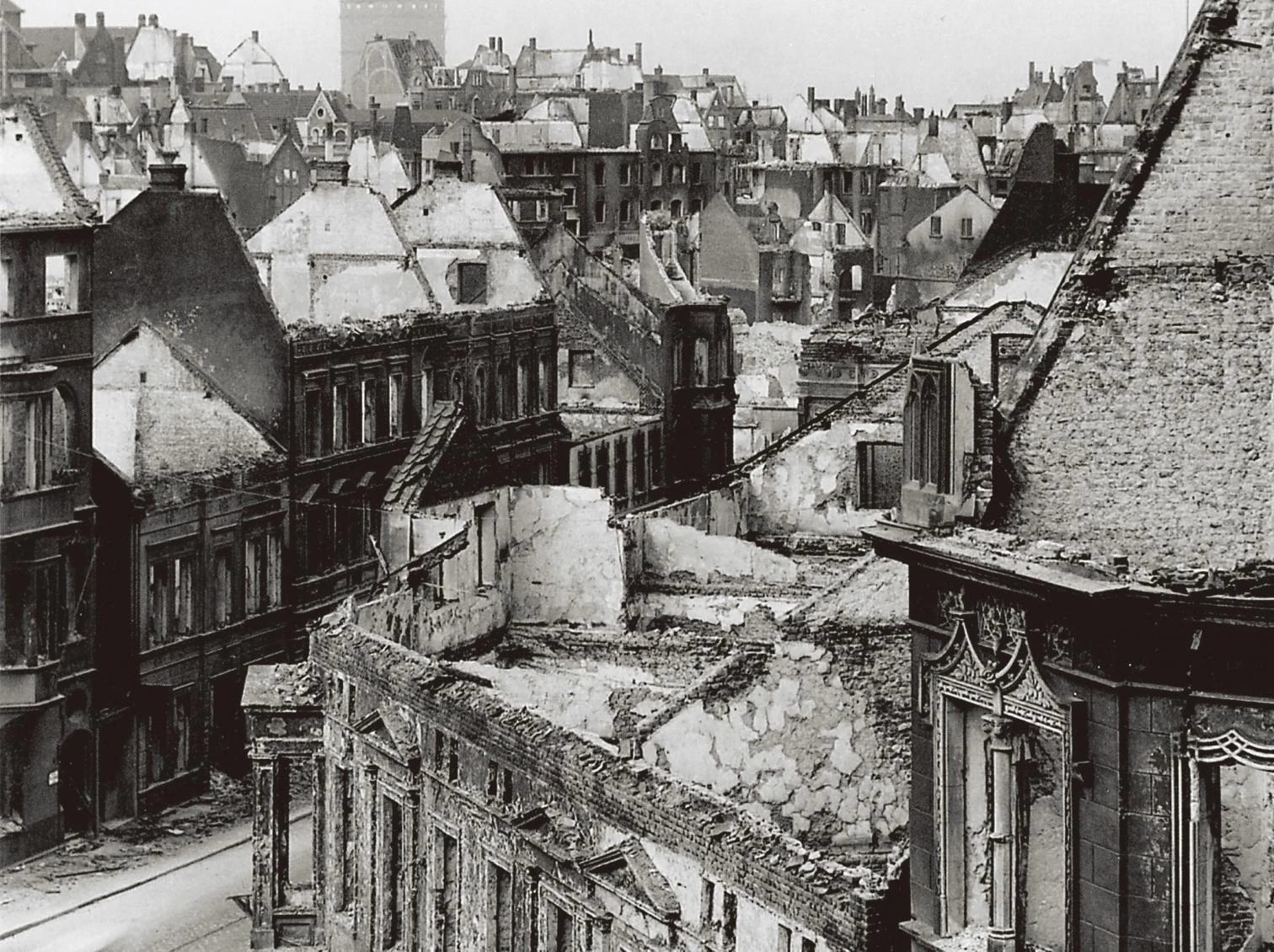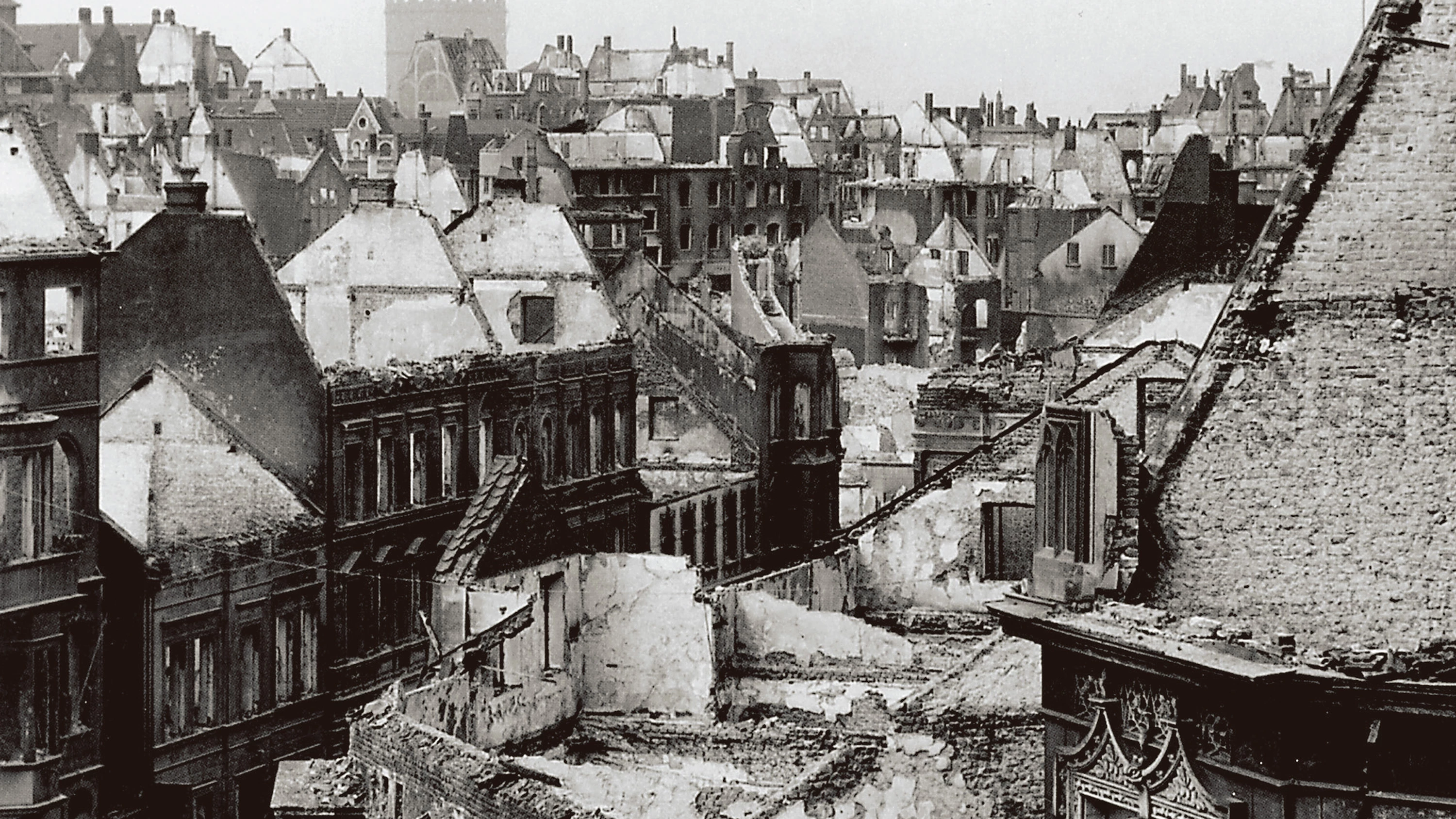¡¡

Old town of Essen after the first bombardment, 1943
The German photographer was one of the highest representatives of the artistic movement called ‘New Objectivity’ that emerged in the early 1920s in Germany. With a style of extreme simplicity and originality, his extensive trajectory begins with images of fragments of nature that culminate with the publication of the book The World is Beautiful in 1928. It continues with its sober captures of urban and industrial environments in the Ruhr (including infrastructures, architecture, machinery, and objects); and it ends with his studies of trees and rocks. His work is characterized by a rigorous technical and formal approach, realism, neutrality, and an objectivity without pictorial stylizations.
The exhibition ‘Albert Renger-Patzsch. The perspective of things,’ curated by Sérgio Mah, professor at Nova University of Lisbon, was on display at the Fundación MAPFRE, Madrid.
Exhibition organized with the special collaboration and scientific support of the Ann and Jürgen Wilde Foundation and the Pinakothek der Moderne, Munich.[+]






